Flower Meanings
Hyacinth
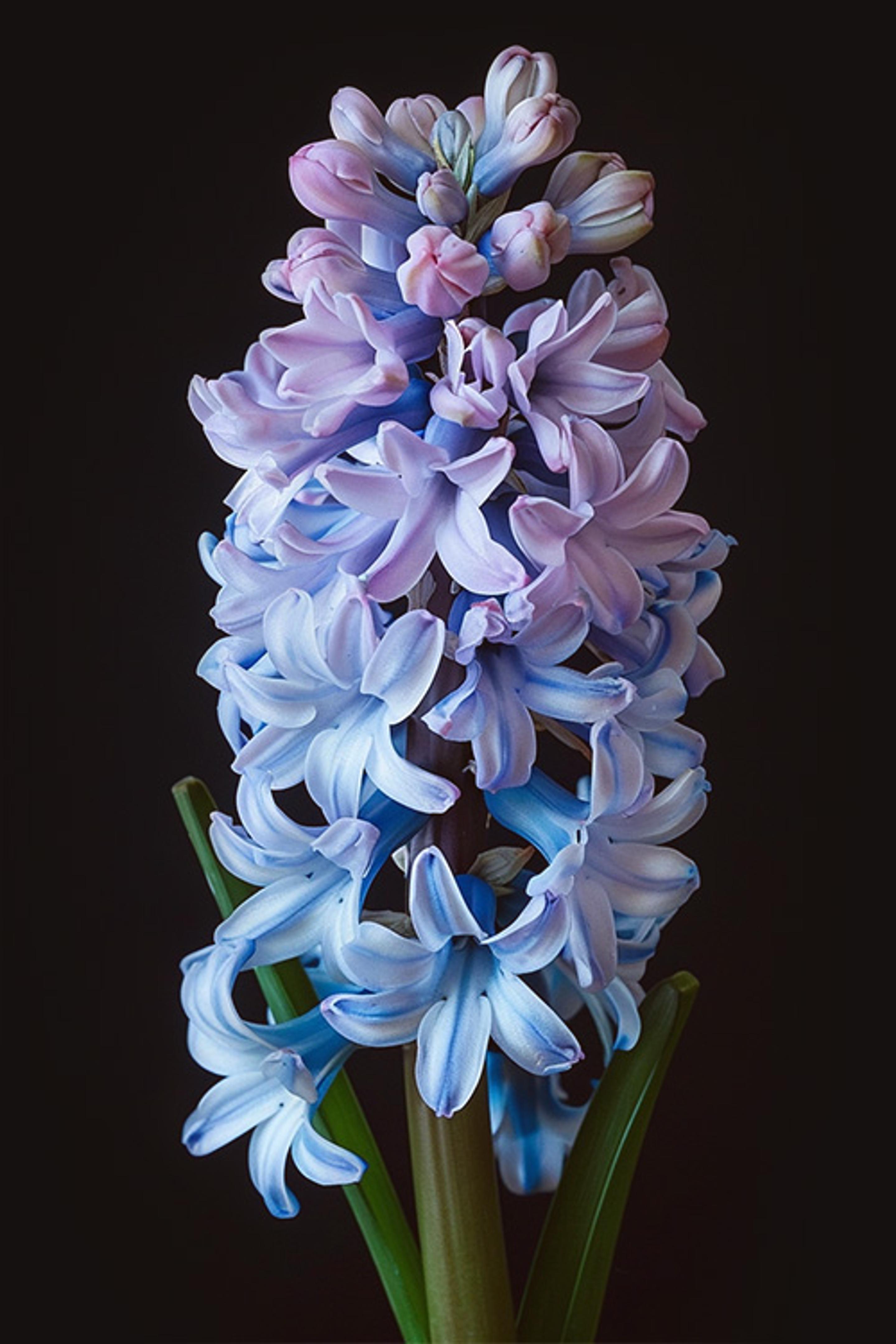

The Meaning of Hyacinths
If you’re an avid literature fan, I’m sure you’ve heard of T.S. Eliot and his infamous ‘Hyacinth Girl.’ If so, don’t you worry, we’re DEFINITELY getting to that. But first, we’ve got to start at the root.
The name ‘hyacinth’ in and of itself, simply has too much meaning to blow past.
In Greek mythology, Apollo, the sun god, and Zephyr, the god of the west wind, compete against one another for the affections of a young boy, Hyakinthos. Apollo is teaching Hyakinthos how to throw a discus. Horrifically angered by the sight, Zephyr blows a gust of wind in Apollo’s direction, sending the discus hurtling back towards Hyakinthos. The discus strikes the young boy, killing him instantly.
Apollo, heartbroken, notices a flower has sprung up from the blood of Hyakinthos, and rightfully names the flower hyacinth, in the young boy’s honor.
There you have folks—another Greek tragedy in the world of flowers.
Fittingly, hyacinths are often known as a symbol of jealousy and sorrow.
Ancient Victorians also considered the hyacinth a symbol of sporting activities, hmm, ah yes, the discus. It’s all coming together now.
On a different note, if you’ve ever taken an American literature class, you’ve probably heard of and / or read T.S. Eliot’s poem The Waste Land. And with that, Eliot’s beloved Hyacinth Girl. Ok, so what’s this all about?
We’re going to tell you!
A little backstory on the poem itself: in The Waste Land, we’re stepping away from popular Greek lyrical fragments and grand themes, and rushing headfirst into High Modernism. The Waste Land actually marks this change in time, communicating with its readers in a more desolate and emotional way.
Eliot’s Hyacinth Girl makes an appearance as a part of this poem. Many say the hyacinth’s addition to the poem can be considered an intended connection by Eliot to the Greek myth of Apollo and Hyakinthos and their tragic discus accident. [1]
We don’t really know if Eliot meant to make any sort of connection to myth; however, we can say that Eliot’s hyacinth-loving pair is meant to evoke warm feelings of first love. The giving of flowers and spending time in the garden surrounded by fresh blooms is the kind of memory everyone wants to have stored away in a safe spot, free to relive whenever they so desire.
Click here to read the poem in its entirety!
Hyacinth Color Meanings
There are many flowers that have just one meaning, but the hyacinth has many meanings depending on its color… and it has a lot of color varieties. Here are just a few different colors and what their hyacinth color meaning is:
- Yellow hyacinths represent jealousy. Be careful who you give these to, wouldn’t want to have any misunderstandings!
- Red hyacinths represent play time or recreation. Perfect to bring as a little surprise for an athlete competing in an important sporting event!
- White hyacinths represent overall loveliness or prayers for a loved one.
- Purple hyacinths can be given to ask for forgiveness or to symbolize a deep regret.
What Does Hyacinth Smell Like?
Why, they smell of spring, of course! Often used in perfumes, the smell of hyacinth develops as the flower blooms—floral and potent. [5]

"You gave me hyacinths first a year ago; They called me the hyacinth girl.’ —Yet when we came back, late, from the Hyacinth garden, Your arms full, and your hair wet, I could not Speak, and my eyes failed, I was neither Living nor dead, and I knew nothing, Looking into the heart of light, the silence. Od’ und leer das Meer."
T.S. Eliot
The History of the Hyacinth
As we know, the name ‘hyacinth’ can be traced back to ancient times. A relict of a non-Greek language, sometimes referred to as Thracopelasgian, spoken approximately 4,000 years ago, specifically. Apparently connected with the blue color of water, its name indicates a reference to the original species, Hyacinthus orientalis, which tended to be blue in color.
The more common, present-day hyacinth or “Dutch” hyacinth was prevalent in ancient times as a wildflower in many parts of the eastern Mediterranean, through Asia Minor and Syria into Iran and Iraq. Many other orientalis varieties have been depicted ever since the 16th century, but the only forms of Hyacinthus orientalis appearing in the current 1989 Classified List and International Registrar of Hyacinths compiled by the Royal General Bulbgrowers’ Association is the species itself and Hyacinthus orientalis albulus. Albulus was an early flowering strain native to the South of France. It dawned a white flower on a small, slender spike and carried the vernacular name of “Roman hyacinth.”
Hyacinths, ever prevalent in poetry, were first mentioned by epic poet, Homer, in the Iliad. He describes the blooms as being among the many flowers which formed the couch of Hera, the queen of heaven and earth. The bloom was also botanically listed by Greek philosopher Theophrastus in 372-297 BCE. Talk about an ancient flower!
Next up, the hyacinth hit the Netherlands and England. Carolus Clusius, the celebrated Curator of the botanical gardens at Leiden, initiated the cultivation of bulbs in Western Europe. Through Clusius, Holland became the commercial bulb growing center of the world. In 1600, the Botanical Gardens at Leiden only cataloged a few hyacinth varieties. In his Rarorium Plantarum Historia, Clusius illustrated many new Hyacinthus orientalis varieties.
Fashion has also been a huge factor in the hyacinth’s extreme popularity. Madame de Pompadour was a big promoter of these sweet-smelling blooms. She ensured that Louis XV had many hyacinth plants throughout his various palace gardens. Hyacinths became a staple in many great halls, as well as embellishing the frail necks of high society. [2]
DID YOU KNOW - Hyacinth Fun Fact
The majority of hyacinth bulbs are grown commercially in the Netherlands.
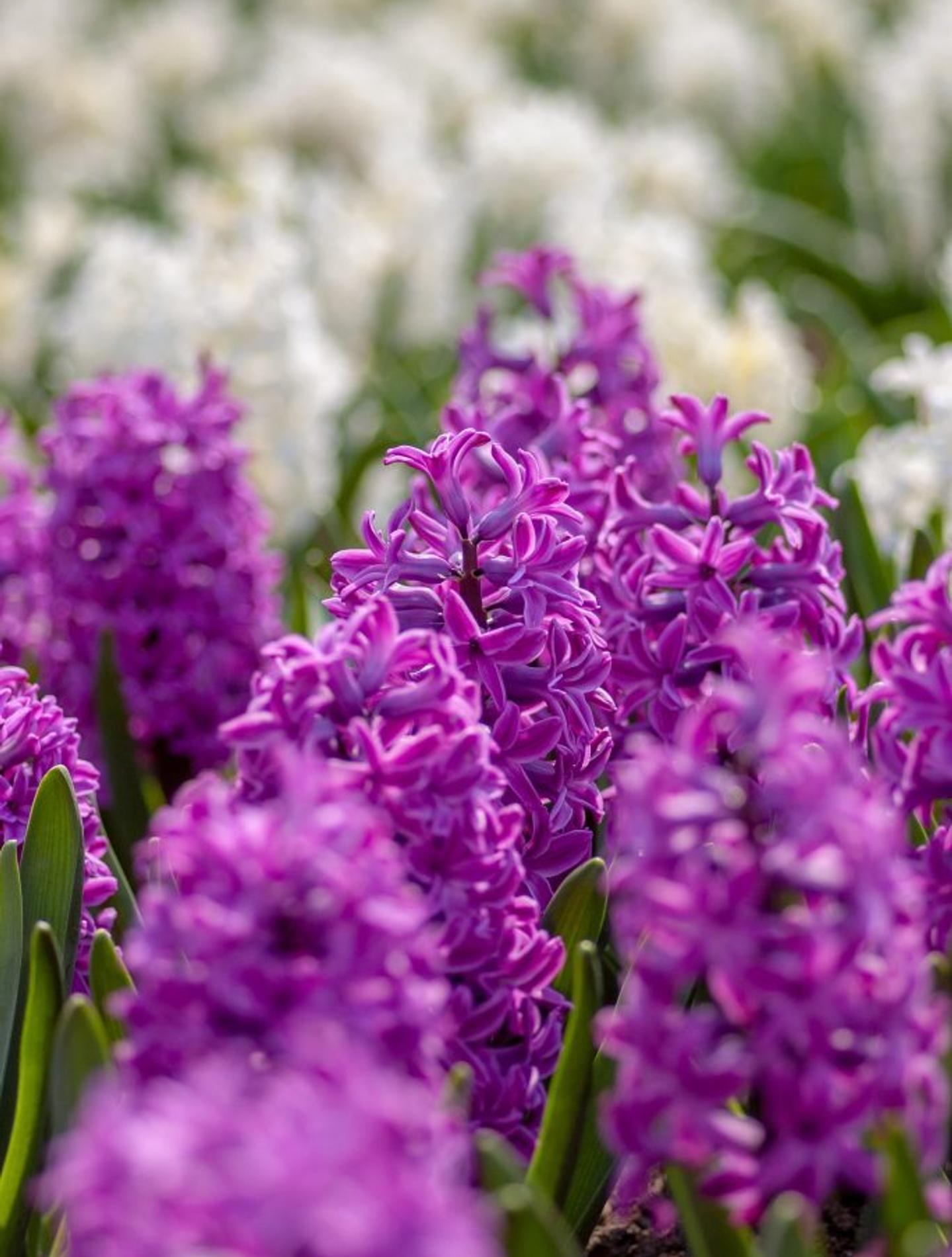
How to Grow Hyacinths
First things first, think ahead about your planting site. You’re going to want to plant your new hyacinths in well-draining, moderately fertile soil in sun or partial shade. Before you plant your bulbs, loosen up the soil a bit and work in some compost or bonemeal for fertility.
Once you’re ready for planting, plant your bulbs 4 inches deep and a minimum of 3 inches apart from one another. Set the bulb in the hole with the pointy end facing upward. After you’ve planted your bulbs, cover them up with soil and water thoroughly. If you are transplanting your hyacinth plants, water them sparingly and then don’t water them again until the flower buds appear the following year.
Pro Tip: Hyacinth bulbs contain oxalic acid, which can irritate the skin. Be sure to use gloves when handling these bulbs for extended periods of time.
You can also force, if you will, your hyacinth bulbs into an early growing period for indoor display throughout the winter months. Plant them with just the tips showing in a soil-based potting mix in containers that have drainage holes. Keep them in a dark place with temperatures above freezing but no higher than 45 degrees Fahrenheit (7 degrees Celsius) for at least 10 weeks to allow its roots to fully develop. When your hyacinth shoots are about 1 inch long, increase their light exposure and temperature gradually. Water them carefully, avoiding getting the shoots wet or water-logging the soil. The soil should be moist after watering but not wet. After they have flowered, you can then transplant your forced hyacinths to the garden, and they will flower once again the following years to come! [3]
DID YOU KNOW - Hyacinth Fun Fact
The hyacinth is used in the celebration of the Persian New Year.
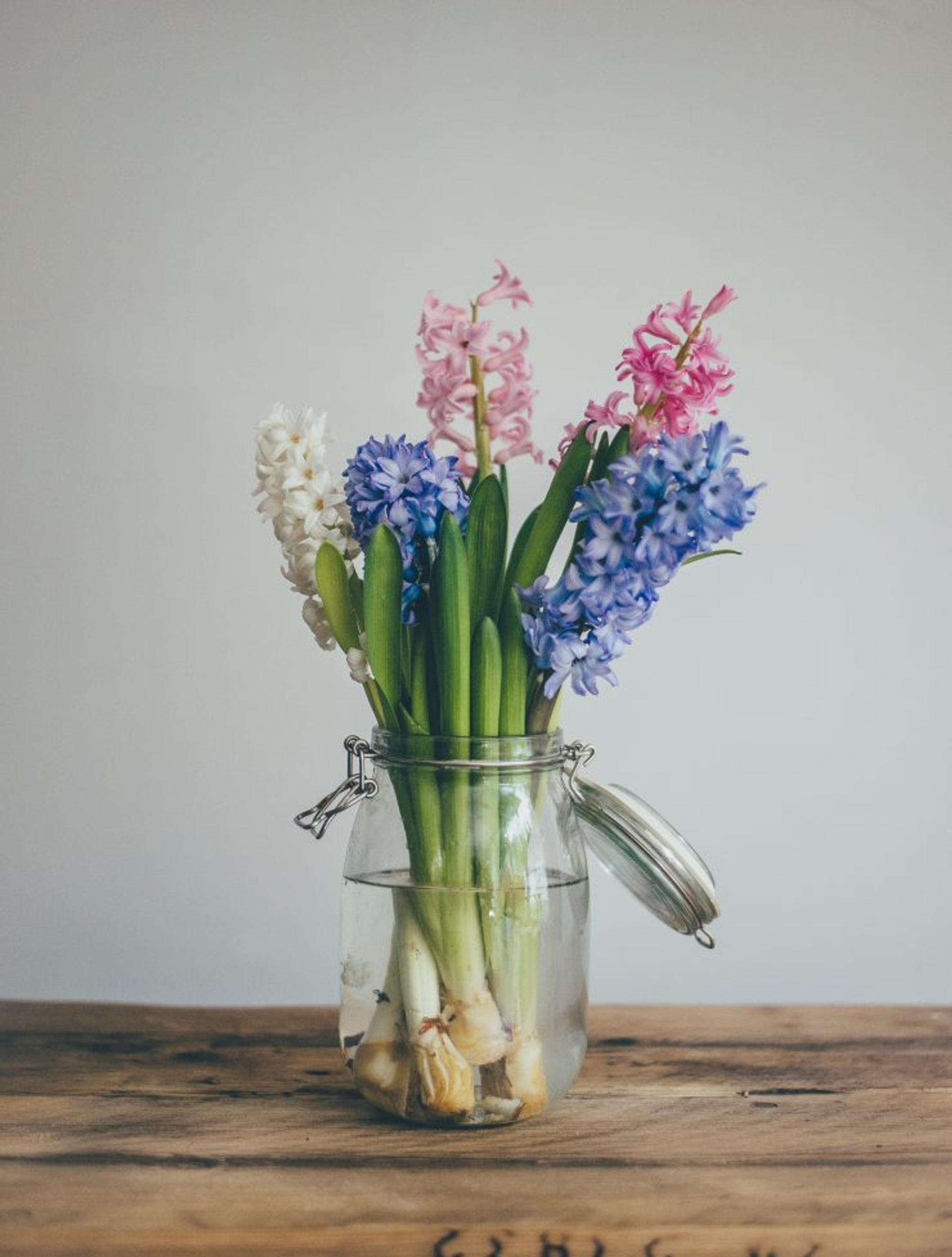
How to Care for Hyacinths
If you’ve ever smelled the light floral scent of a hyacinth flower, you’ll know that it quite literally takes everything inside of you not to cut them all up and hoard them all inside your home.
Don’t worry; you’re so not alone.
Potted hyacinths are an excellent alternative to this; let your garden thrive while still getting to enjoy them inside! Even better, if you give them the proper care, they’ll continue to bloom when they’re next blooming cycle hits!
After about 8-12 weeks of blooming, your hyacinth plant will begin to go dormant. The first thing to do is to simply let the flowers die, and the leaves wither.
We know, it’s hard to watch.
Once most of the flowers have turned brown, begin to deadhead your plant by cutting the entire flower stalk off. At this point, its leaves should still be green and should just be left alone to die off on their own. Be careful not to break or bend any of your hyacinth’s leaves, as this will keep them from storing up the necessary energy for their next blooming cycle. Use a good indoor plant fertilizer to help them build up more energy and be sure not to over-water! If watered too much, the bulbs have the potential to rot. [4]
If you’re cutting your hyacinths and bringing them inside from the garden, be sure to rinse off the stems and place them in a small amount of water, a little less than half a vase full. The stalks of your hyacinth can cause water-logging in the entire flower if they’re left to sit in too much water.
When to Send Hyacinths as a Gift
Give hyacinths as a welcome gift, to symbolize a fresh start, or to offer well wishes and hope for good things to come! With their sweet scent and vibrant colors, hyacinth makes the perfect spring centerpiece for your dining room table, according to Lovingly Momentmaker, Imagine A Dream Eventz.

References:
- 1 - Frank Hudson
- 2 - Old House Gardens
- 3 - Almanac
- 4 - Gardening Know How
- 5 - Perfume Society
Flower Meanings — keep discovering

Gladiolus
The gladiolus: a beautiful, proud, tall drink of water. We commonly recognize glads by their strikingly tall stalks and large, abundant blooms that grow in all sorts of vibrant colors. As the month of August’s prized flower, these blooms have a lot more to offer than just their beauty.
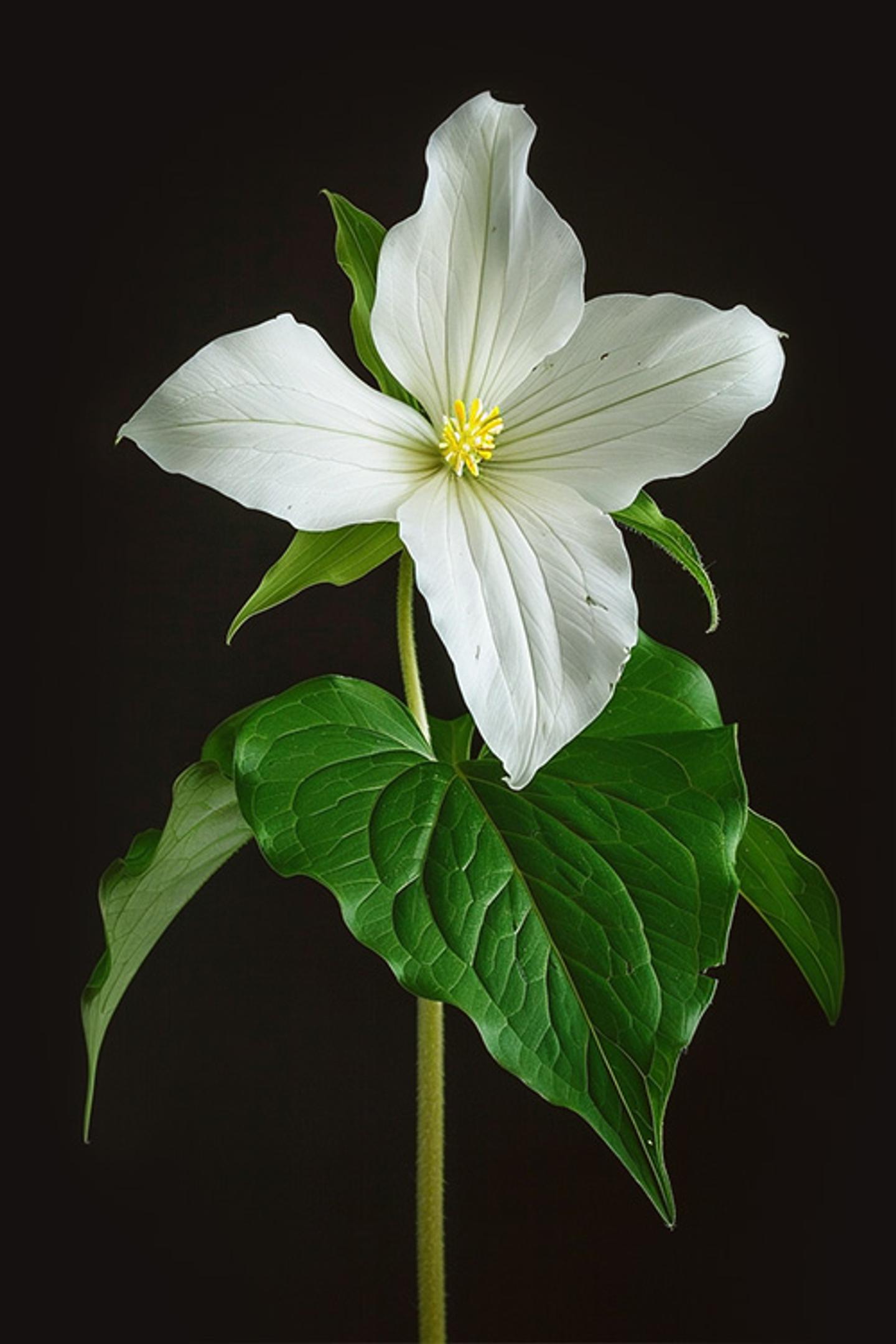
Great White Trillium
Trillium is a forest wildflower that is part of the lily family. Although it’s quite the stunning wild beauty, it is a little smelly. If you ever find yourself hiking your way through the Pacific Northwest, be sure to keep your eyes and nose) peeled!
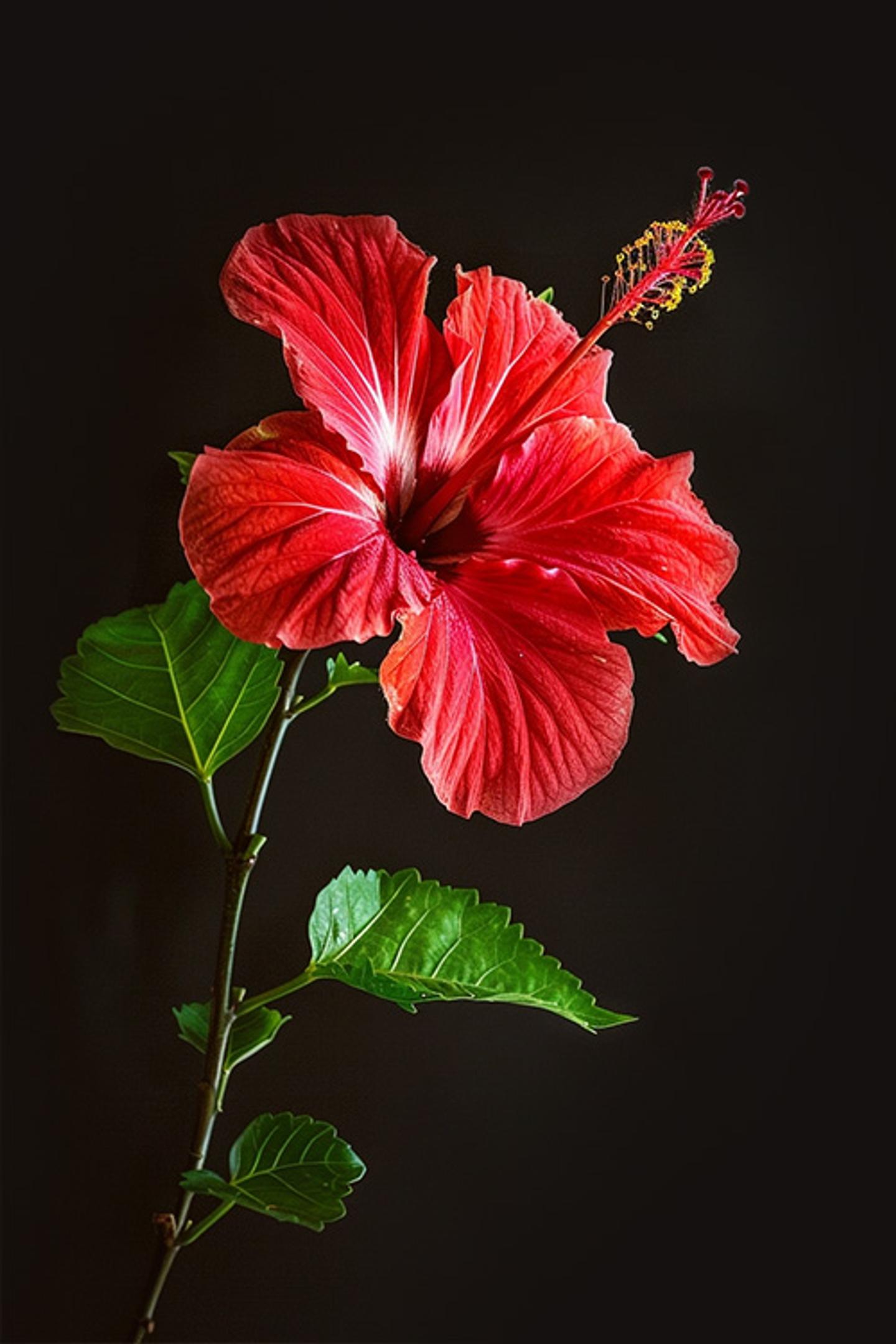
Hibiscus
The ultimate tropical bloom! Hibiscus is a genus of flowering plants in the mallow family, Malvaceae, and are native to warm subtropical and tropical regions around the world!
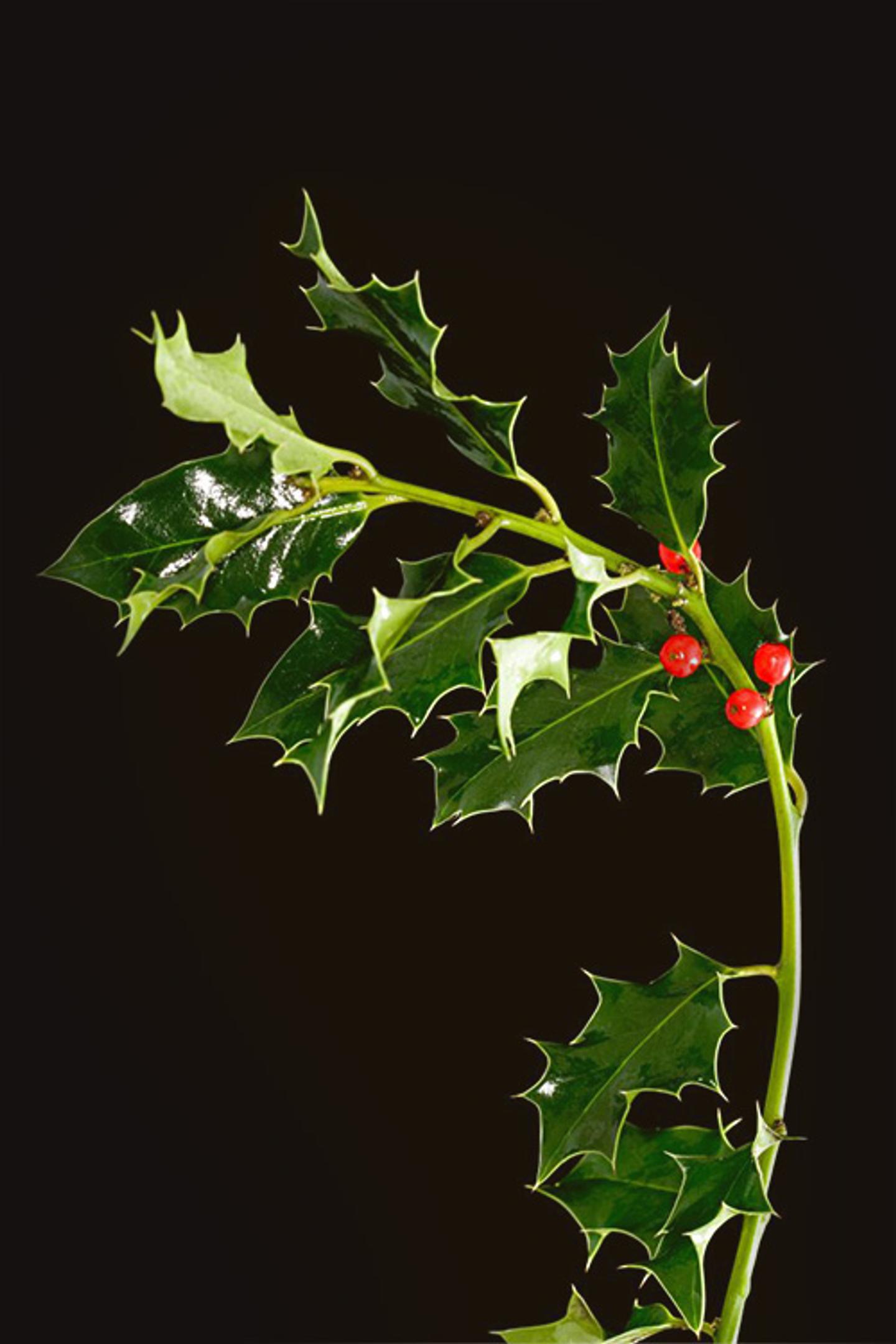
Holly
Have a holly jolly Christmas! With it’s shiny, prickly leaves and bright red berries, holly is undoubtedly a Christmas favorite. But that doesn’t mean we can’t enjoy them all year round!

Gladiolus
The gladiolus: a beautiful, proud, tall drink of water. We commonly recognize glads by their strikingly tall stalks and large, abundant blooms that grow in all sorts of vibrant colors. As the month of August’s prized flower, these blooms have a lot more to offer than just their beauty.

Great White Trillium
Trillium is a forest wildflower that is part of the lily family. Although it’s quite the stunning wild beauty, it is a little smelly. If you ever find yourself hiking your way through the Pacific Northwest, be sure to keep your eyes and nose) peeled!

Hibiscus
The ultimate tropical bloom! Hibiscus is a genus of flowering plants in the mallow family, Malvaceae, and are native to warm subtropical and tropical regions around the world!

Holly
Have a holly jolly Christmas! With it’s shiny, prickly leaves and bright red berries, holly is undoubtedly a Christmas favorite. But that doesn’t mean we can’t enjoy them all year round!
Ready to send beautiful flowers?
Our guided experience helps you send a one-of-a-kind arrangement perfect for every occasion.
Send Flowers